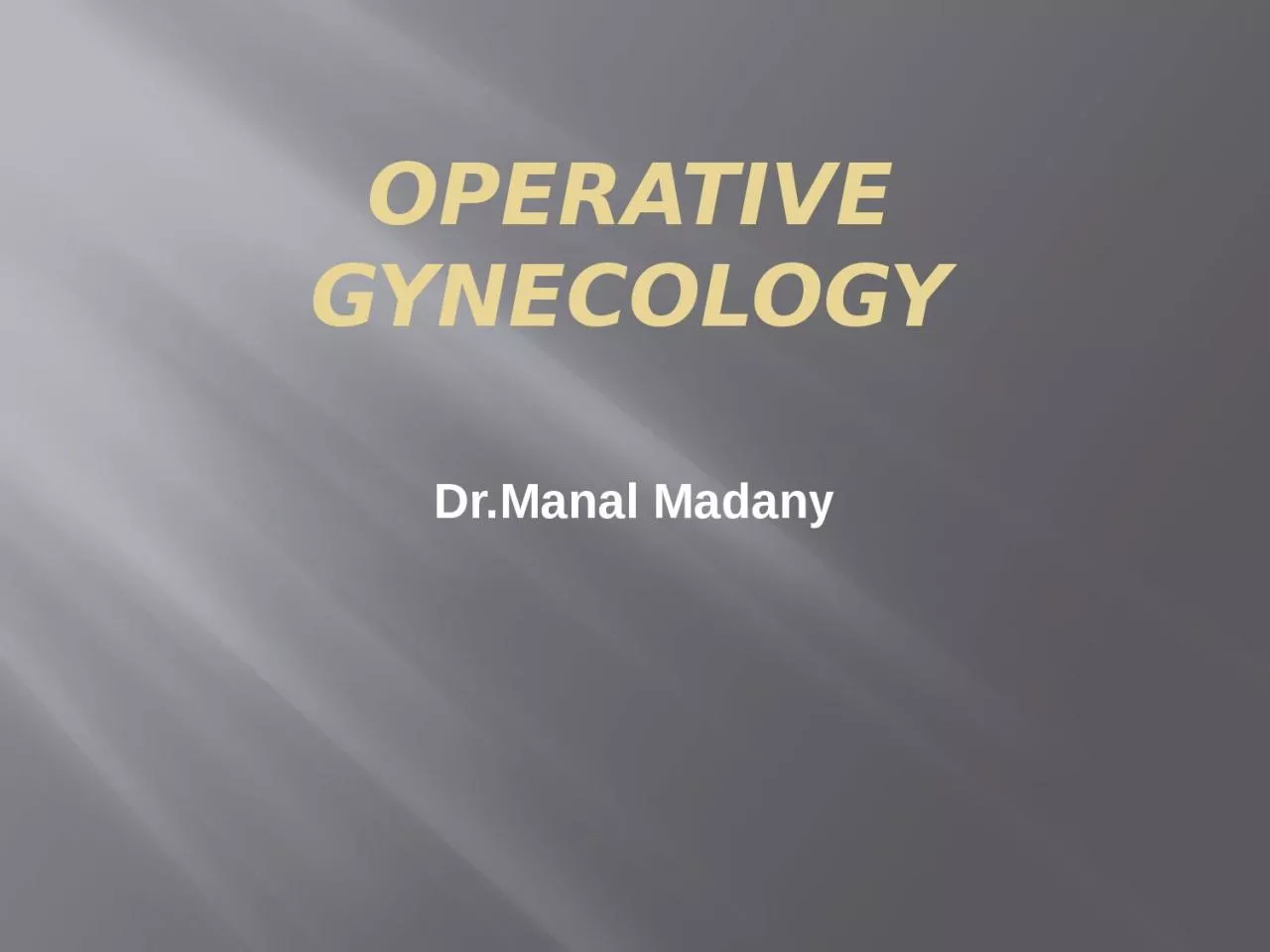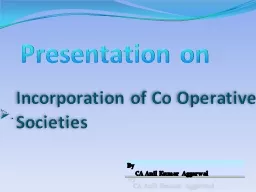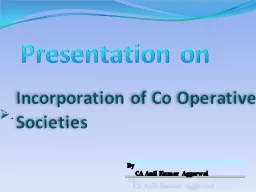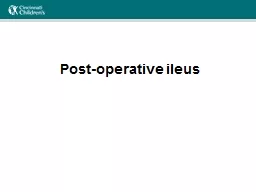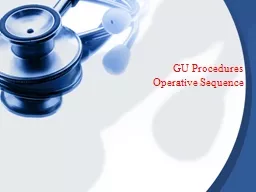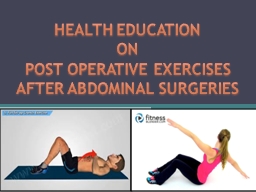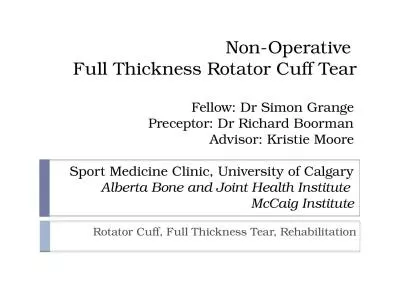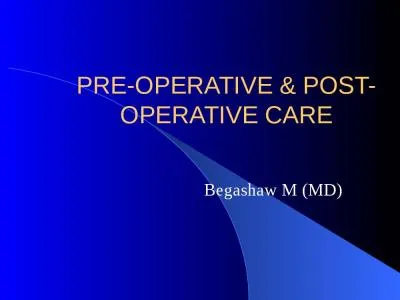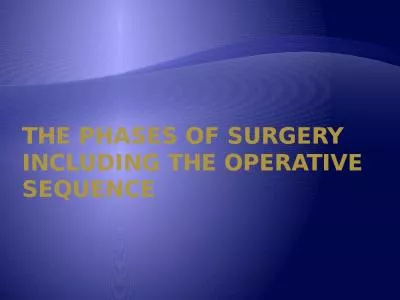PPT-OPERATIVE GYNECOLOGY Dr.Manal
Author : brown | Published Date : 2022-06-28
Madany The following primary goals of preoperative evaluation and preparation Documentation Perioperative risk determination Education of the patient about
Presentation Embed Code
Download Presentation
Download Presentation The PPT/PDF document "OPERATIVE GYNECOLOGY Dr.Manal" is the property of its rightful owner. Permission is granted to download and print the materials on this website for personal, non-commercial use only, and to display it on your personal computer provided you do not modify the materials and that you retain all copyright notices contained in the materials. By downloading content from our website, you accept the terms of this agreement.
OPERATIVE GYNECOLOGY Dr.Manal: Transcript
Download Rules Of Document
"OPERATIVE GYNECOLOGY Dr.Manal"The content belongs to its owner. You may download and print it for personal use, without modification, and keep all copyright notices. By downloading, you agree to these terms.
Related Documents

